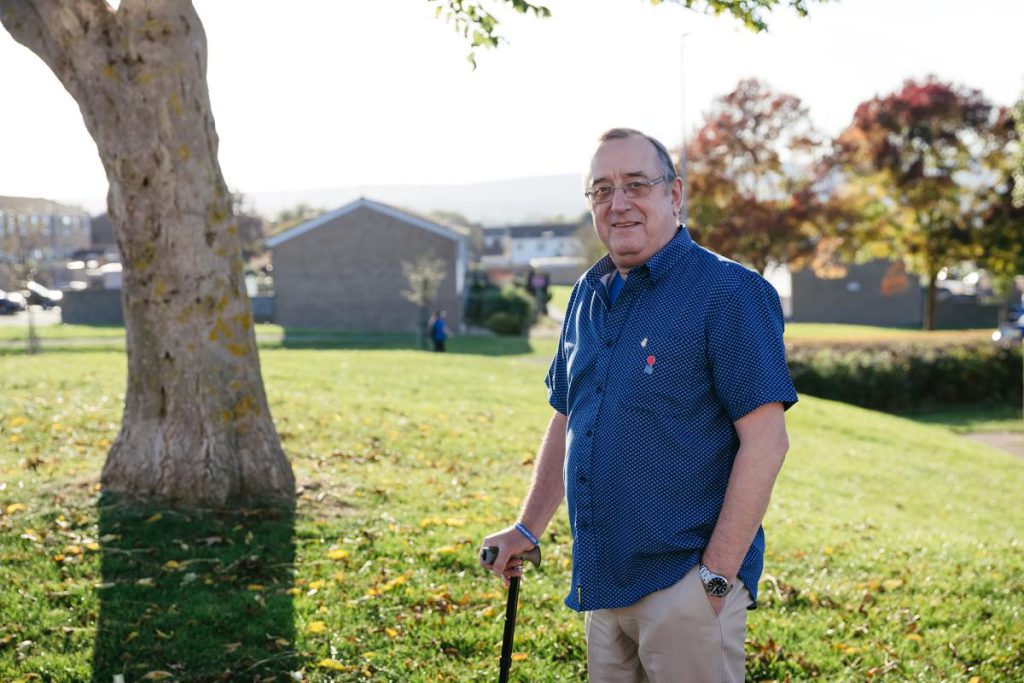Keeping lungs healthy: occupational lung disease
We need to act to raise awareness of the risks to our health from breathing hazardous chemicals, dust and fumes in our places of work. We must also ensure that employers are aware of their legal duty of care to ensure that workplaces are safe.
A personal view: occupational ris

Occupational lung disease can take many years to emerge and be complicated by other factors. As a young apprentice in the printing industry, Gordon Jenkins was responsible for melting the lead that was used to set the type. Twice a day he went to the basement to a small room containing the pot where used lead was melted down and re-cast into blocks for use on the typesetting machine. Gordon says: “All the time I was in the basement I was breathing in all the noxious fumes that were in the air, especially when I was up close to the cauldron while I removed all the dross that rose to the surface.”
Gordon, originally from London but now living in Eastbourne, was diagnosed with COPD when he was in his early 60s. He was rushed to hospital suffering from pneumonia and following treatment and further tests he received his diagnosis almost one year later. “To be honest, I was relieved to be told that it was COPD,” Gordon says. “I thought it might be lung cancer.” Like many boys and young men of his generation, Gordon was a heavy smoker for most of his life, which makes it difficult to attribute lung disease to a single cause. He quit in 2010, after several failed attempts over a number of years.
There is a perception that occupational lung disease is an historic problem that has gone away. But there are an estimated 20,000 new cases of self-reported breathing or lung problems linked to workplaces every year. We want employers and line managers to take a leading role in highlighting the risks at work and encouraging colleagues to think about their safety and the safety of others. This includes wearing protective clothing and masks when appropriate and ensuring that colleagues do the same.
A workplace initiative to improve understanding and working conditions
The British Occupational Health Society has created Breathe Freely to try and reduce lung disease. It helps employers and employees to understand the health risks, and then improve working conditions.
The initiative is supported by many building companies, such as Brown & Carroll. The company has long enforced a policy that requires an automatic dust extraction system because of the dangers from breathing in wood dust when cutting timber, in particular MDF products. All cutting machines have dust extractors but when small quantities of visible dust in the air and on the surfaces around the cutting stations were reported, it was clear that the risk of exposure to the potentially harmful airborne wood dust particles was not being effectively controlled.
Everyone undertaking cutting works must now wear disposable dust masks as a secondary precaution. Different masks provide different levels of protection depending on the types of dust and everyone’s face fit is tested to ensure that these dust masks are worn correctly and are comfortable.
We want organisations responsible for recruitment and training in health care to ensure that all health care professionals are aware of the continuing risk of occupational lung disease, which should be included in continuing professional development. We need to put occupational lung disease on the curriculum.
Measures of success
Reduction in the incidence rate and number of new cases of occupational lung disease as reported by the Health and Safety Executive. All higher education institutions for health care professional training (undergraduate and postgraduate) where appropriate have an occupational disease programme identified in their curriculum.
Data need: Data to be collected on the number of respiratory specialist training programmes that include content on occupational lung disease.
